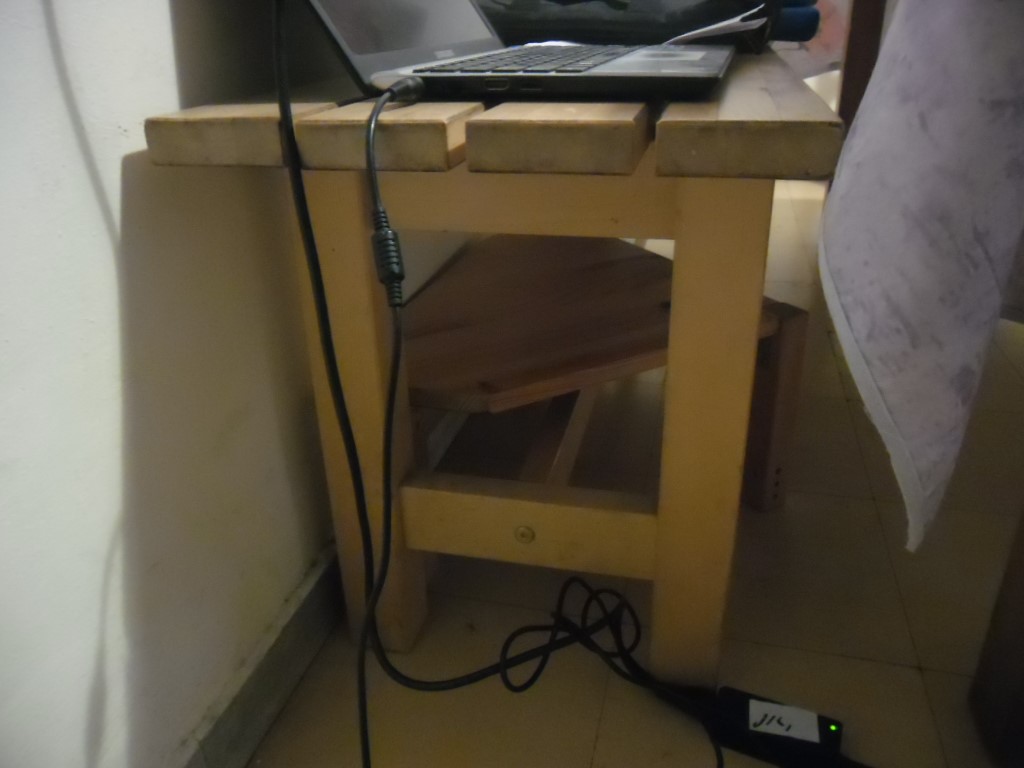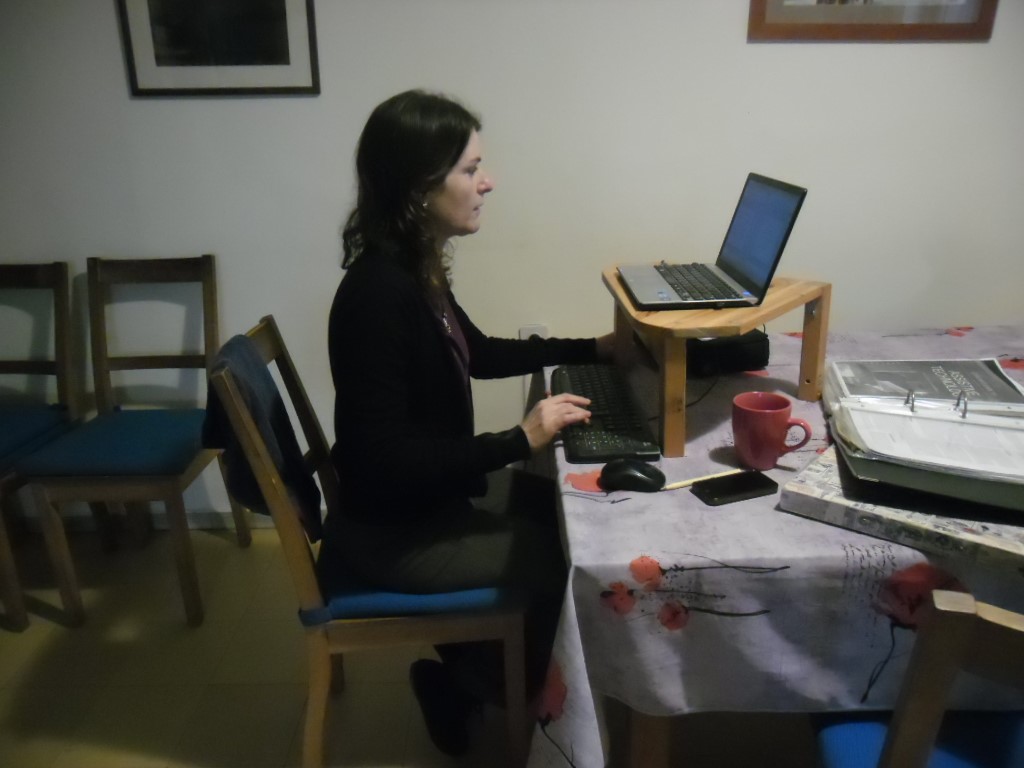Lori is an occupational therapist and she knows a lot more about seating and ergonomics than you and me. She works with clients in power and regular wheelchairs. Her job is to customize and adjust seating to help them avoid pain, discomfort and probably even pressure sores. And yet, when it comes to her home workstation, she is exposed to a wide range of ergonomic risks common to most laptop users who have set up their workstation on the dining room table. Even if we have a good awareness of ergonomics our own workstations are often sadly deficient. If your home office is a laptop on your dining room table here are a few questions you might want to ask yourself.
Is My Dining Room Chair Appropriate for Laptop Use?
If you are like most other dining room table laptop users, the answer to this question is probably no. Most dining room chairs do not support your lower back and do not have adjustable features, like seat height and adjustable height armrests. If your chair is too low relative to your table, you are probably reaching up from the elbow to reach your keyboard. Dining room tables are usually higher than office desks, making the fit between chair and table height even worse. If your forearms aren’t supported, your neck and trapezius are doing a lot of the work. This could be why they are so tense.
Is inconvenient storage preventing me from using the correct equipment?
Lori is a busy mother and she sees value in working at the center of the house. Like many of us, she takes out her laptop in the evenings to answer a few emails and gets stuck for an hour and a half. After an hour her neck hurts and that’s when she says she should have taken out her riser. She could store it under the dining room bench where she stores her laptop, but she keeps it under her bed and doesn’t take it out unless she anticipates that she will be working for hours at a time. Her storage solution is preventing her from using a device that can make her work safer and more comfortable. If you have a riser, external keyboard and mouse that you are not using because they are stored somewhere inconvenient, you may want to rethink your storage decisions.
Am I Positioning My Riser, External Keyboard and Mouse Correctly?
These candid photos make it easy to see that using a riser has a positive impact on posture. A screen that is too low and too far away strains our neck and usually our lower back as well. Using a riser returns the neck to a neutral position. Lori’s homemade riser forces her to use an external keyboard which is great but it does not allow room on the table to support her forearms. Although the position of her neck and back is greatly improved, the strain on her wrists has worsened. Correct placement of an external keyboard must allow room on the table for forearms.
If My Laptop Was Chosen for Weight and Compactness, Have I Made The Necessary Adjustments for Dining Room Table Usage?
Like many of us, Lori has chosen a laptop that is lightweight and easy to take everywhere. She bikes to work and has chosen an ergonomic backpack to carry her computer. She says that a smaller keyboard would be better because then it could go in the backpack with her computer and she could use it all the time. She had a larger laptop but found herself thinking twice about whether to take it to work. As we have seen, without the necessary adjustments, a very compact laptop leads to incorrect posture especially at the neck and lower back, but a larger laptop requires the same adjustments as a compact one; riser, external keyboard and mouse. Lori gave her old laptop to her daughter who now uses it on her bed to do her school assignments, a topic well beyond the scope of this post. If you or your kids use a laptop in bed, stay tuned.










 I have been helping people to sit and move comfortably since 1998. I am always looking for ways to help people improve their relationships with their bodies.
I have been helping people to sit and move comfortably since 1998. I am always looking for ways to help people improve their relationships with their bodies.